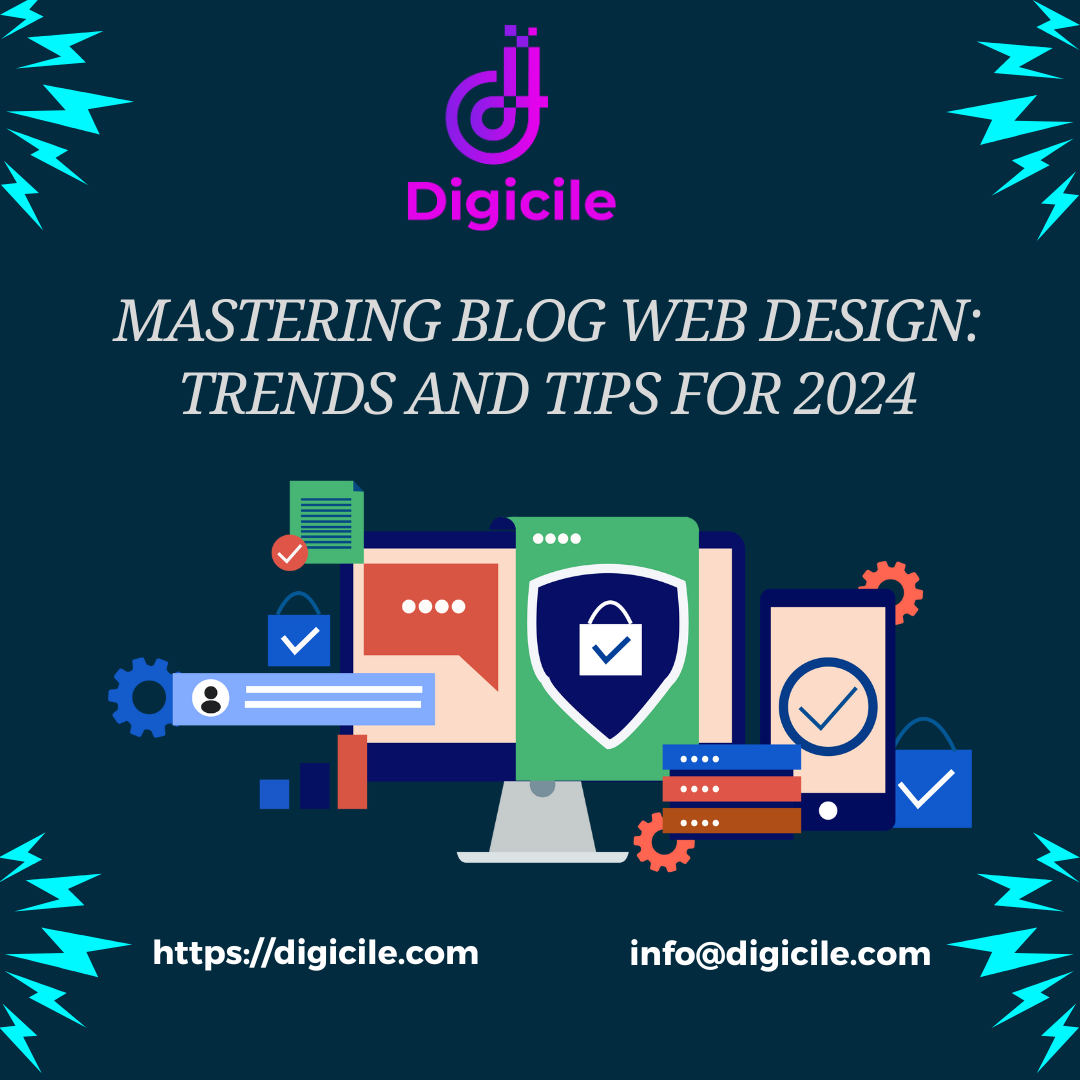In 2024, the landscape of blog web design continues to evolve with new technologies and user expectations. Whether you’re starting a new blog or refreshing an existing one, mastering the latest trends and implementing effective design tips is crucial for engaging your audience. This blog post delves into the key trends and offers practical tips to help you master blog web design in 2024.
Introduction
- Importance of Blog Web Design: Impact on user experience, engagement, and branding.
- Evolution of Blog Design: How trends have shaped modern blog aesthetics and functionalities.
Key Trends in Blog Web Design for 2024
1. Minimalist and Clean Design
- Purpose: Focus on content readability and user interface simplicity.
- Elements: Plenty of white space, simple typography, and intuitive navigation.
2. Dark Mode Compatibility
- User Preference: Catering to users who prefer darker interfaces for reduced eye strain.
- Implementation: Toggle switch for light/dark mode, ensuring readability and aesthetics in both modes.
3. Mobile-First Approach
- Responsive Design: Optimizing blog layouts for various screen sizes and devices.
- Performance: Fast loading times and smooth navigation on mobile devices.
4. Interactive and Engaging Elements
- Animations and Microinteractions: Adding subtle animations for visual interest and engagement.
- User Feedback: Polls, quizzes, and interactive elements to encourage user interaction.
5. Accessibility
- Inclusive Design: Ensuring accessibility for users with disabilities.
- Standards: Compliance with WCAG guidelines, alternative text for images, and keyboard navigation.
Practical Tips for Effective Blog Web Design
1. Clear Navigation and Information Architecture
- User Journey: Easy navigation to categories, recent posts, and search functionality.
- Hierarchy: Clear organization of content with categories and tags.
2. Visual Hierarchy and Typography
- Headings and Subheadings: Use of hierarchy to guide readers through content.
- Font Choices: Readable fonts with appropriate sizes for different devices.
3. Optimized Images and Media
- Image Compression: Balancing quality with loading speed.
- Video Integration: Seamless embedding of videos with autoplay options.
4. SEO-Friendly Design Practices
- Meta Tags: Optimizing meta titles, descriptions, and URLs for search engines.
- Structured Data: Markup for rich snippets and improved search engine visibility.
Implementing Blog Web Design Trends in 2024
- Tools and Resources: Utilizing design tools, frameworks, and templates for efficient development.
- User Testing: Gathering feedback and making iterative improvements based on user behavior.
Conclusion
Mastering blog web design in 2024 involves staying updated with current trends while focusing on usability, accessibility, and user engagement. By implementing minimalist design principles, embracing dark mode compatibility, and optimizing for mobile responsiveness, you can create a visually appealing and functional blog that resonates with your audience. Incorporate these tips and trends into your blog design strategy to enhance user experience and achieve your blogging goals in the competitive digital landscape.






